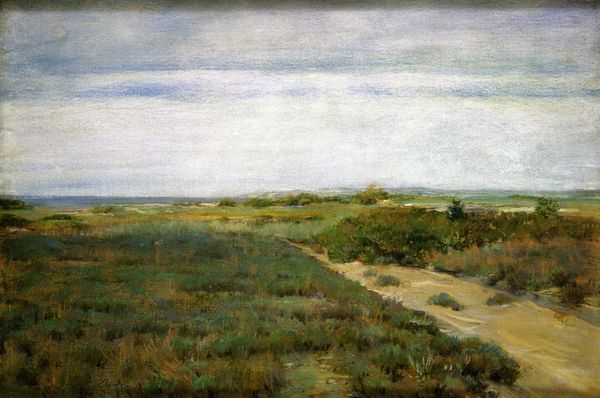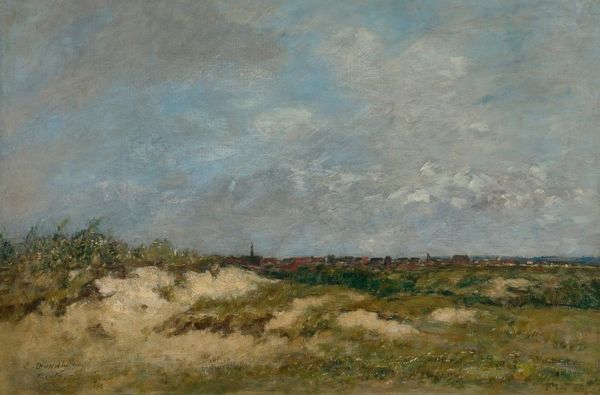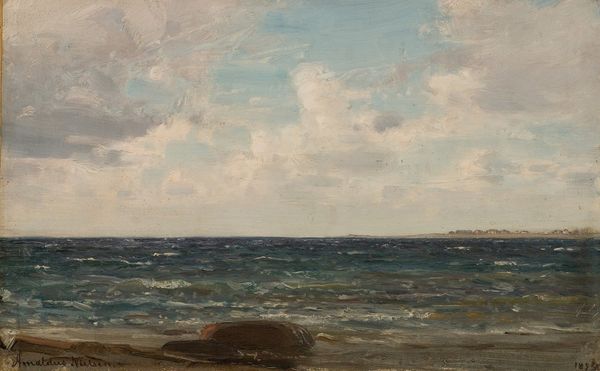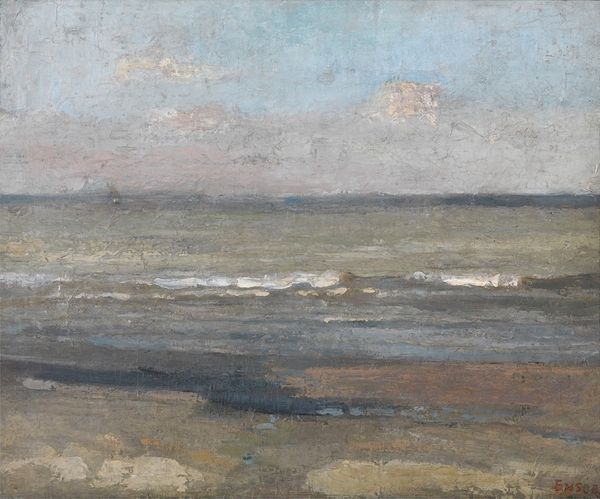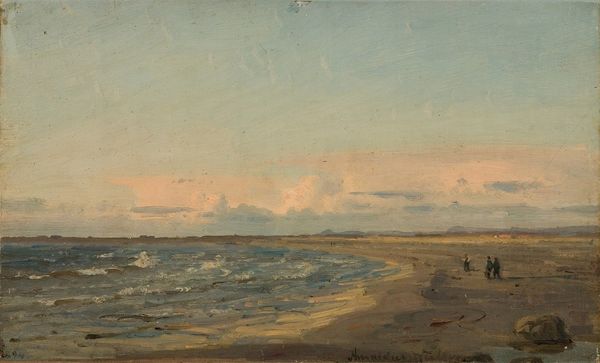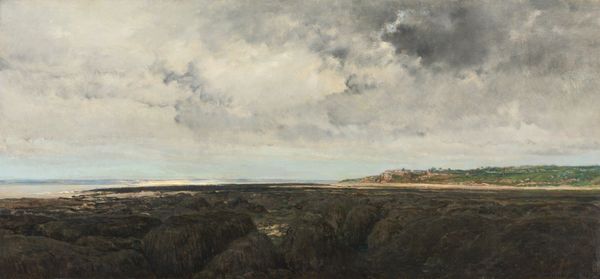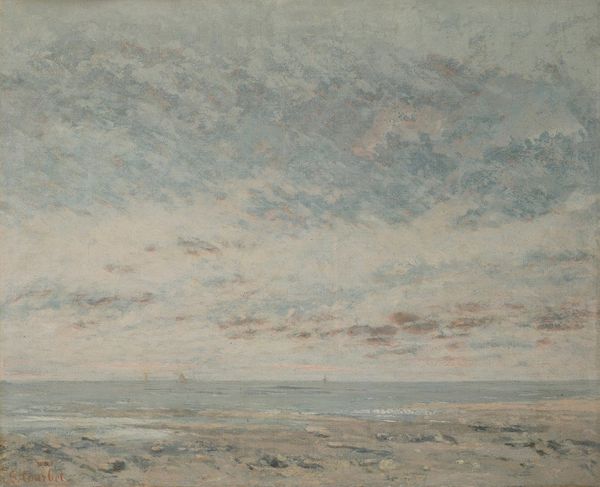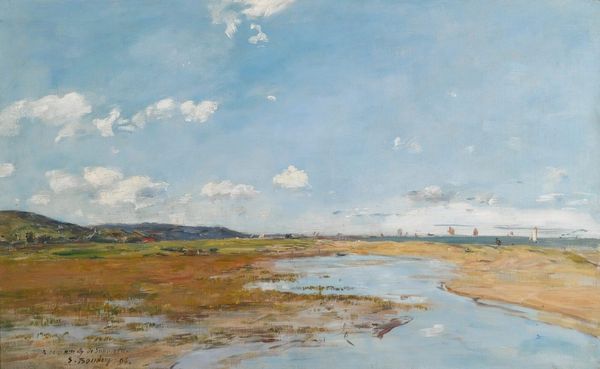
painting, plein-air, oil-paint
#
painting
#
impressionism
#
plein-air
#
oil-paint
#
landscape
#
impressionist landscape
#
oil painting
Copyright: Public Domain: Artvee
Curator: Daubigny’s "The Dunes at Camiers," painted in 1871, presents a seemingly simple coastal landscape. There’s a compelling straightforwardness in the rendering of material: the shifting sands, the hardy grasses, the endless water, and vast sky. Editor: There's something starkly melancholic about it, wouldn’t you agree? That broad, pale sky pressing down on the dark, almost churning sea... it evokes a sense of loneliness, almost isolation, despite being a landscape. Curator: It’s a wonderfully tactile piece when you consider it in context, an instance of plein-air painting which brought a whole tradition of studio-based work outside. You have to imagine Daubigny grappling with wind and weather to capture that texture of sand with broad brushstrokes in the open air, directly engaging with the landscape itself. Editor: The image almost presents a symbolic boundary. The dunes, thick with grass, anchor the work, keeping it earthbound, while beyond, the implied infiniteness of water speaks of possibilities, transformation, and even danger. See how the sea mirrors the sky; it's quite powerful. Curator: Absolutely, and that feeling of transience connects to broader trends within Impressionism that prioritized observation and spontaneity in capturing everyday scenes. By engaging with nature's immediacy, artists were freed from convention. "The Dunes at Camiers" really challenges those art world boundaries, too, by considering art materials in direct relation to the manual labor needed to work them. Editor: Consider how landscapes had historically often stood in for allegorical or even religious meanings. Think of, say, Caspar David Friedrich and then consider that Daubigny shifts away from imbuing nature with those kinds of heavy, romantic symbolism. Instead, there is almost something purely elemental on offer here, as if we’re confronted only with the barest visual and emotional experience of a place. Curator: That stripped-back feel also speaks to a specific socioeconomic reality too. Daubigny painted the work shortly after the Franco-Prussian war, an interesting backdrop when thinking about French landscape painting's status in a moment of upheaval, with traditional symbols challenged by the changing means of producing it. Editor: Indeed. Reflecting on this now, that impression of melancholy feels very appropriate considering what you just mentioned. Perhaps my first impression wasn’t so spontaneous after all! Curator: Well, regardless of historical context, engaging with an artwork that prompts subjective insights into the experience of place and material is always worthwhile.
Comments
No comments
Be the first to comment and join the conversation on the ultimate creative platform.
